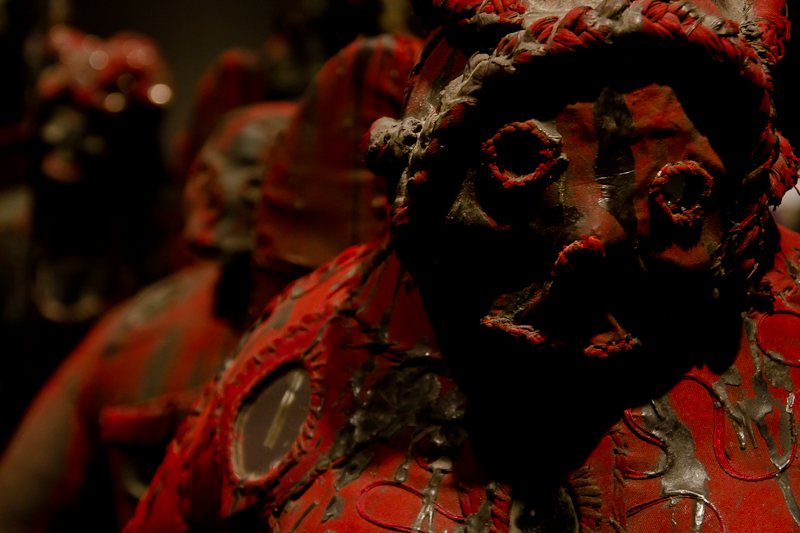
Picture in your mind a vodou priestess. For most people in Canada, the first image they think of is a frightening witch doctor sticking pins in a voodoo doll to punish her enemies.
Actually, any vodouist will tell you there’s no such thing as “voodoo dolls” except in Hollywood movies.
The Canadian Museum of Civilization recently launched an exhibition on Haitian vodou that aims to teach Canadians about the widely misunderstood culture and to dispel negative perceptions.
The extensive Vodou exhibition includes over 300 artifacts from the Marianne Lehmann collection.
Visitors can look at ceremonial drums, rattles, altars, and statues but won’t see a single doll stuck with pins.
“We want the visitor to see that this is not something that is exotic, that is bizarre, that is strange,” co-curator Rachel Beauvoir-Dominique said.
“We would also like this exhibition to throw a light on Haiti and vodou as it has been stereotyped historically because of the domination and the historical oppression.”
Beauvoir-Dominique is a practicing priestess of Haitian vodou as well as an anthropologist.
She is one of the founding members of an organization in Haiti that helped preserve the nearly 3,000 vodou artifacts collected by Swiss-born Marianne Lehmann since the 1980s.
Lehmann, who moved to Haiti in 1957, felt so compelled to preserve these artifacts that they crowded her house, to the point where she slept with objects above her head and under her bed, Beauvoir-Dominique said.
She eventually used her mother’s inheritance to purchase storage for the collection.
The artifacts in the exhibit toured museums in Europe before the Museum of Civilization picked them up.
“It’s a strong show. It’s a very robust and rich exhibition,” museum president and Carleton alumnus Mark O’Neill said.
“Some of the images some people find a little bit macabre. There’s some very vivid things in this exhibition.”
One section of the exhibition has a “viewer discretion advised” warning. The room is full of life-sized humanesque figures in red and black with mirrors for eyes.
Some of them are chained, some have horns.
A description of that section says the disturbing nature of the objects testifies to the horrors of slavery.
The slave history of Haiti is a very important aspect of vodou culture.
Haitian vodou stems from the African traditions of slaves brought to the island beginning in the 16th century, but it also incorporates and respects aspects of indigenous teachings and Catholicism.
Many vodou spirits, called Lwa, double as Christian saints and many artifacts resemble the Virgin Mary.
Haitian ambassador Frantz Liautaud said he thinks people’s perception of vodou as evil is tightly linked to Haiti’s violent history.
“It’s a history of fight from the beginning,” he said.
The museum uses descriptive text boxes to explain to visitors how this history of oppression and resistance shaped the religion of vodou.
Visitors learn how vodou was characterized as evil even after Haiti won independence from France during the slave revolt.
Stereotyping became a way for foreign powers to continue justifying dominance over the island.
“I think what really struck me in the way they conceive of this exhibit here is that it’s not the traditional outsiders’ look at a particular event,” Liautaud said.
“You are as the insiders, the practitioners. The vodouists are talking to you about what they are and what they really mean.”
Canada has a significant Haitian population of 130,000-150,000 but it’s impossible to say how many practice vodou, the ambassador said.
“Maybe an exposition like this will get most of these people out of the cupboard. To me, it’s a way of breaking taboos and making sure that we don’t see things as diabolic,” Liautaud said.
“It’s a wonderful practice as you see we sing, we dance, we have ceremonies,” Beauvoir-Dominique said.
“And it’s a very free religion. It’s not a constraining religion, it’s very open. It’s really to come out.”





